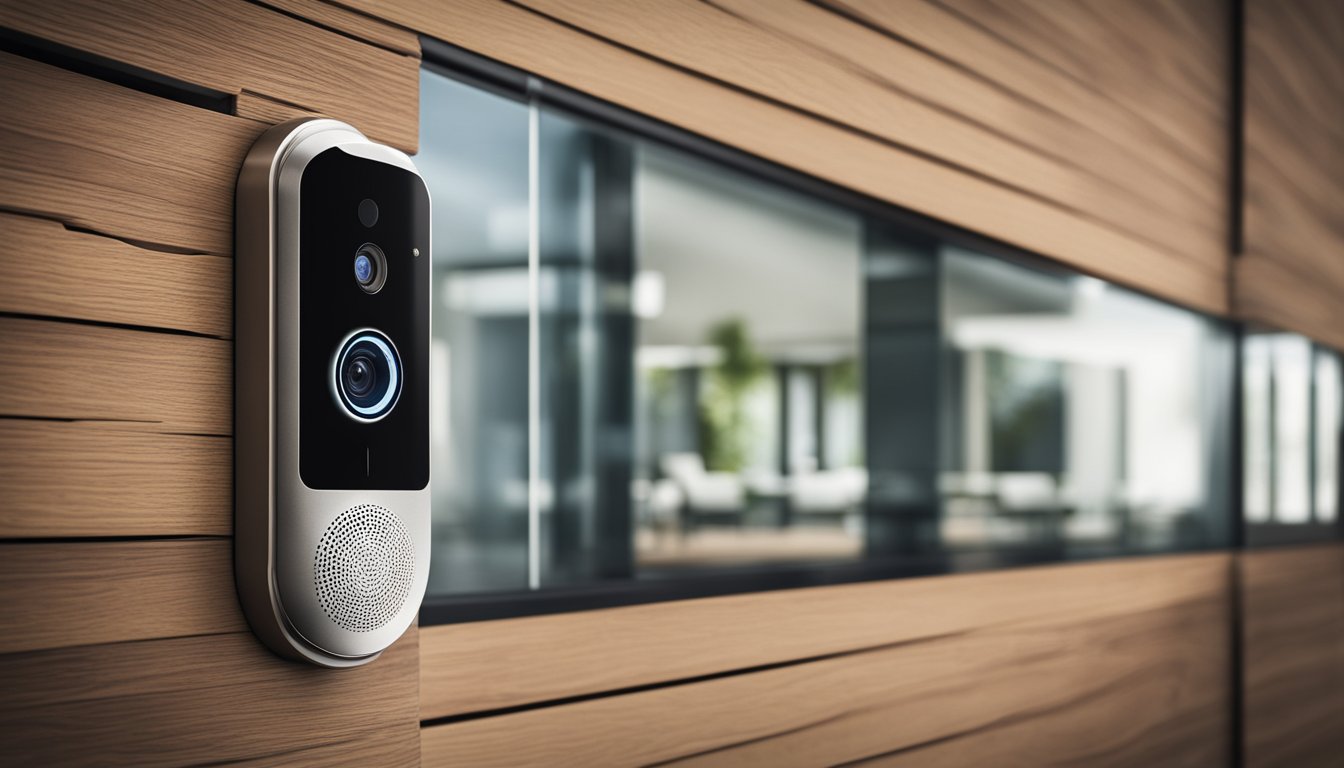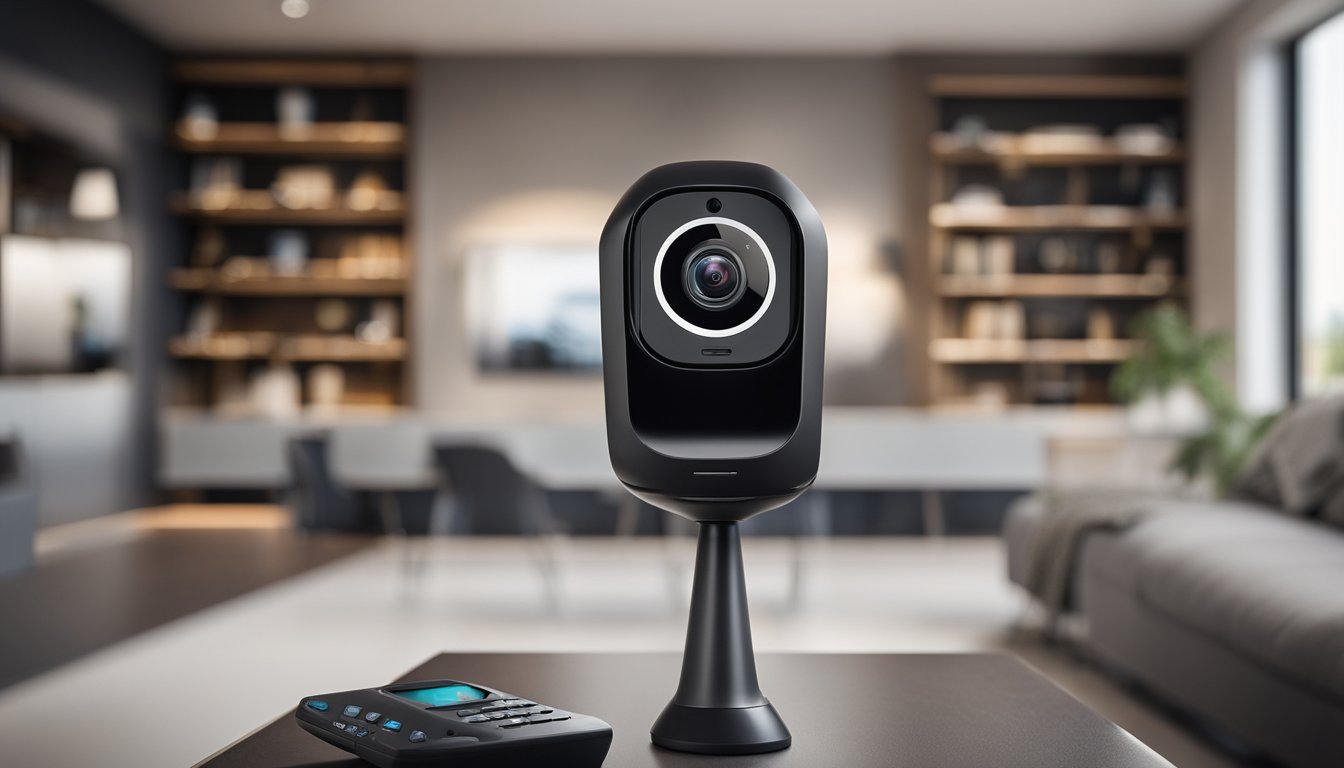Late updated: 20 Jan 2025 15:01
Written by: Elena Prescott
Innovative Home Security Solutions For 2024: Top Trends and Technologies
In 2024, the world of home security is undergoing a remarkable transformation, fuelled by technological advancements. With smart home security systems becoming more integrated with the Internet of Things (IoT), homeowners can now access innovative solutions that provide enhanced protection and convenience. Our homes are not just fortresses of security; they are hubs of smart technology designed to simplify our lives while keeping us safe.

The constant evolution of technology has resulted in a variety of cutting-edge security systems that are more user-friendly and effective. These systems offer comprehensive features such as 24/7 monitoring, remote access through smartphones, and seamless control over devices like locks, cameras, and thermostats. As we explore these developments, it's essential to consider the practical implementation and user experience these solutions offer.
Our exploration of innovative home security solutions aims to provide valuable insights for anyone interested in upgrading their home security. These advancements raise pertinent questions, and we're here to address them with informed answers.
Key Takeaways
- Smart security systems integrate seamlessly with IoT.
- New home security solutions offer improved user experience.
- Practical tips are available for upgrading home security systems.
Technological Innovations in Home Security
In 2024, home security systems are incorporating cutting-edge technologies to enhance safety and reliability. Noteworthy advancements include AI and machine learning for smart threat detection, IoT integration connecting smart devices for a seamless security experience, and robust cybersecurity measures safeguarding digital access points.
AI and Machine Learning Advances
Artificial intelligence and machine learning are revolutionising security systems. AI-powered surveillance optimises real-time threat detection and reduces false alarms. For instance, predictive analytics can forecast potential security breaches, offering preemptive solutions. Facial recognition technology bolsters security by providing accurate identity verification, whilst biometric authentication adds an extra layer of protection. These technologies not only enhance security but also contribute to smarter homes by learning and adapting to the routines of their inhabitants.
Integration of IoT and Smart Devices
The integration of IoT devices and smart technology is pivotal in modern security systems. Within connected homes, these elements create a cohesive smart home ecosystem. Smart locks and access control systems offer keyless entry, blending convenience with security. With devices syncing seamlessly, residents benefit from innovative automation, such as programmed lighting and smart cameras that respond to motion. As smart security systems continue to advance, the focus on sustainability and energy efficiency becomes increasingly important, ensuring devices use minimal resources while delivering maximum security benefits.
Enhancing Cybersecurity Measures
Strengthening cybersecurity is fundamental as more devices connect online. With threats evolving, maintaining robust cybersecurity measures becomes critical to protect home systems. Security networks and firewalls are essential for safeguarding against digital intrusions. Additionally, blockchain technology is emerging as a secure way to manage data privacy and ensure strong passwords. By implementing comprehensive privacy settings and data encryption, we can better shield personal information from potential breaches. As our reliance on digital conveniences grows, so too does our commitment to reinforcing digital security in our homes.
Practical Implementation and User Experience

In the realm of home security, practical application and user experience are pivotal. Cutting-edge technologies like IoT security and biometric systems enhance usability and safety. Ensuring ease of use while maintaining robust security protocols is essential.
Reducing False Alarms and Improving Accuracy
The precision of motion sensors and surveillance cameras has significantly improved with the integration of edge computing. Advanced algorithms in smart home security systems utilise real-time monitoring to differentiate between genuine threats and harmless events, reducing false alarms.
Geofencing is employed to minimise erroneous alerts by adjusting system sensitivity based on the user's location. This method, combined with regular software updates, enhances system reliability. Our focus is on balancing security and accurate threat detection to ensure peace of mind for users.
User-Friendly Security Management
User experience is enhanced through intuitive interfaces and seamless integration of IoT security components. Remote control of security features is accessible via smartphones, allowing easy management of home safety systems. This ensures that real-time alerts and adjustments are user-centric.
Our systems prioritise privacy and personal information security while offering extensive customisation options. Biometric security systems also simplify user interaction, making access secure yet straightforward. Emphasising simplicity ensures users interact effortlessly with technology, enhancing their overall satisfaction.
Physical Security and Surveillance Enhancements
In 2024, physical security is strengthened by innovations in surveillance technology. Enhanced surveillance cameras offer higher resolution and improved night vision capabilities, ensuring comprehensive home protection. Edge computing facilitates swift data processing, enabling quicker responses to security breaches.
Drones and robotic patrols represent a new frontier in home security, offering broader coverage and adaptability to various environments. Biometric entry systems alongside traditional measures add layers of security to safeguard our homes. Real-time monitoring assures immediate responses, reinforcing our commitment to user safety and security.
Frequently Asked Questions

As we enter 2024, the landscape of home security is significantly evolving, with cutting-edge technologies and diverse systems offering increased protection and convenience. This FAQ section explores the advanced features of modern home security systems, compares professional solutions with DIY systems, and looks at the top self-monitored options available.
What are the most advanced features found in 2024's leading home security systems?
Leading home security systems in 2024 are equipped with AI-driven analytics, smart locks, and IoT integration. These systems offer real-time surveillance capabilities, enhanced personalisation through machine learning, and seamless connectivity with other smart home devices, providing users with comprehensive security solutions.
How do professional home security solutions for 2024 compare to DIY systems?
Professional solutions typically offer advanced features like 24/7 monitoring and expert installation, while DIY systems provide flexibility and cost savings. Users can customise DIY systems to meet their needs but might lack the extensive support found in professional services.
What are the top self-monitored security systems available in 2024?
Self-monitored security systems popular in 2024 include those with user-friendly mobile apps and real-time alerts. Companies like Ring, SimpliSafe, and Abode are known for providing systems that allow homeowners to monitor and manage security features directly from their smartphones.
What are the benefits and drawbacks of non-subscription home security systems?
Non-subscription systems eliminate monthly fees, offering a more budget-friendly alternative. The primary benefits include cost savings and direct control over security settings. However, they may lack professional monitoring services, which could be a drawback for those seeking constant vigilance.
Which companies are at the forefront of the home security industry as of 2024?
Companies like ADT, Ring, and Arlo continue to be leaders in the home security market in 2024. They are recognised for incorporating innovative technologies, maintaining high reliability in system performance, and providing user-centred security solutions.
What technological advancements are expected to shape the future of home security?
The future of home security is expected to be shaped by advancements in AI, machine learning, and increased IoT integration, enhancing system intelligence and responsiveness. Enhanced biometrics and voice recognition technologies are likely to play significant roles in improving access control.
